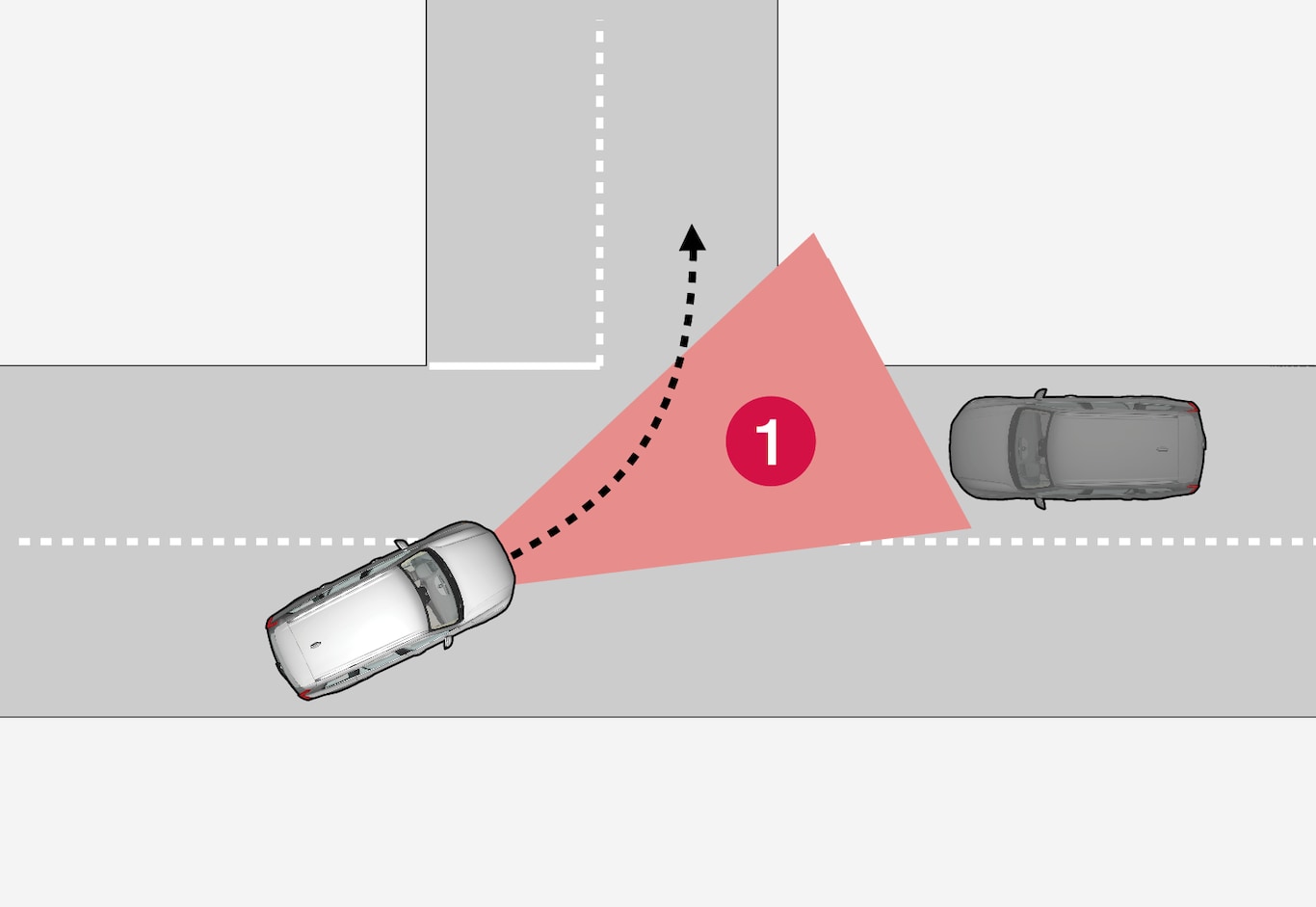City Safety in cross traffic
City Safety can help the driver when turning and crossing the path of another oncoming vehicle at an intersection.

For City Safety to detect an oncoming vehicle on a collision course, the oncoming vehicle must first enter the sector (1) in which City Safety can analyse the situation.
The following further criteria must also be fulfilled:
- your car must be travelling at no less than 4 km/h (3 mph)
- your car must turn to the left in markets with right-hand traffic (or to the right in left-hand traffic)
- the oncoming vehicle must have its headlamps switched on.
Warning
City Safety is an aid and does not work in all driving situations, traffic, weather and road conditions.
Warnings and brake interventions due to a collision risk with an oncoming vehicle often come very late.
The driver is always responsible for maintaining the correct distance and speed - never wait for a collision warning or for City Safety to intervene.
Limitations in cross traffic
In some cases City Safety may have difficulty helping the driver deal with collision risks due to oncoming cross traffic. Examples are:
- stability control ESC intervenes in the event of slippery driving conditions
- if the oncoming vehicle is detected too late
- if the oncoming vehicle is obscured by something
- if the oncoming vehicle has headlamps switched off
- if the oncoming vehicle drives in an unpredictable manner, for example, abruptly changes lanes at a late stage.